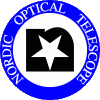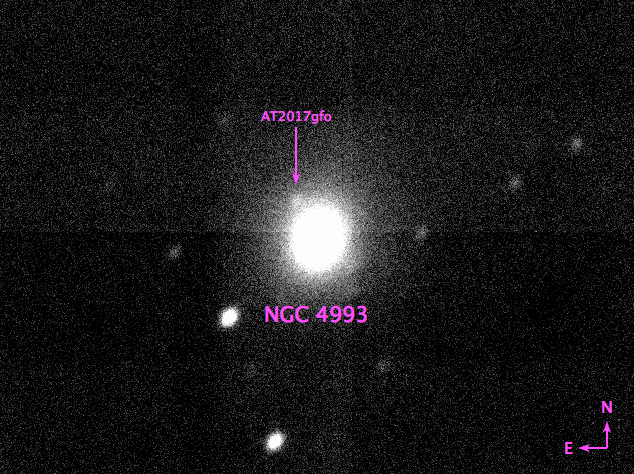
NOT observes gravitational wave counterpart!The discovery of gravitational waves in 2015 September from the LIGO detector was a watershed event for both physics and astronomy. Gravitational waves are ripples in the fabric of space-time, produced by masses undergoing accelerated motion. But they are so weak that nowhere in the Solar System is gravity strong enough to create a detectable gravitational wave signal. Luckily, the universe is home to very special heavy, compact objects, such as black holes and neutron stars. Sometimes these objects bind together forming a binary system, and can even collide and merge in a catastrophic explosion. It is under these conditions that gravitational waves of sufficient intensity form we can detect. Until now, LIGO has detected gravitational wave signals only from binary black holes. Unfortunately, these systems are not expected to emit any radiation other than gravitational waves. Astronomers would very much like to see light and other forms of electromagnetic radiation from these objects. This would allow, among other things, to accurately localise the position of the event in the sky, identify its host galaxy, measure its distance, study the composition of the emitting medium, and many other properties. All of this has become reality with the discovery of the first neutron star merger via gravitational waves, possible thanks to the joint effort of the LIGO and VIRGO detectors. The addition of VIRGO to the network allowed to constrain much more accurately the location of the event in the sky. Besides, completely independently, the Fermi and INTEGRAL satellites detected a short gamma-ray burst coincident in time and position with the gravitational wave event. After a frantic search, wide-field survey telescopes noted an unusual, new object in the proximity of the galaxy NGC 4993, 40 Mpc (130 million light-years) away from Earth. A number of observations have since confirmed the association of this object with the gravitational wave event. This is the first time that both gravitational waves and light, from across the entire electromagnetic spectrum, have been detected from the same source, truly opening the field to "multi-messenger astronomy". The target has properties broadly consistent with those of a "kilonova", which is the glowing emission from the radioactive debris though to be ejected by merging neutron stars. These explosions are likely to play a significant role in the production and dispersion of some of the heaviest elements (heavier than iron) in the universe, which can be produced only in the neutron-rich environment surrounding these unique objects. In such a pivotal moment of astronomical research, the NOT played its part. Although the location of the target was badly observable from La Palma, being to the south and relatively close to the Sun, this did not stop observations with the NOT. As soon as the counterpart was reported, observations were requested in the near-infrared (J and K filters). The object had to be observed during the very early part of the night, the so-called twilight, when the sky is not yet completely dark, and the telescope had to be pointed nearly towards the horizon, at an elevation of 10 to 15 degrees (astronomers refer to a quantity called "airmass", which ranged between 4 and 5.5). Despite the difficult conditions, these observations yielded a detection of the gravitational wave counterpart, as well as of its bright host galaxy, and are among the earliest observations of the source. The following night, images were secured in the optical filters, again under very difficult observing conditions (this time the airmass ranging from 6 to 9!). The NOT observations were carried out as part of a pre-approved observing program (PI Elena Pian), possible under the joint Italian/Nordic partnership promoted by the NOT and the TNG telescopes. This proposal is itself part of the broader follow-up activities organised by GRAWITA (GRAvitational Wave Inaf TeAm; https://www.grawita.inaf.it/, and in collaboration with the gravitational wave group in Copenhagen, connected to the development of the NOT transient explorer (NTE) instrument. The results were merged with observations secured by other telescopes, including ESO/VISTA, and contributed to build the spectacular light curve of this very interesting object. Links (to be updated): For further details, please contact
Daniele Malesani |
||
|
